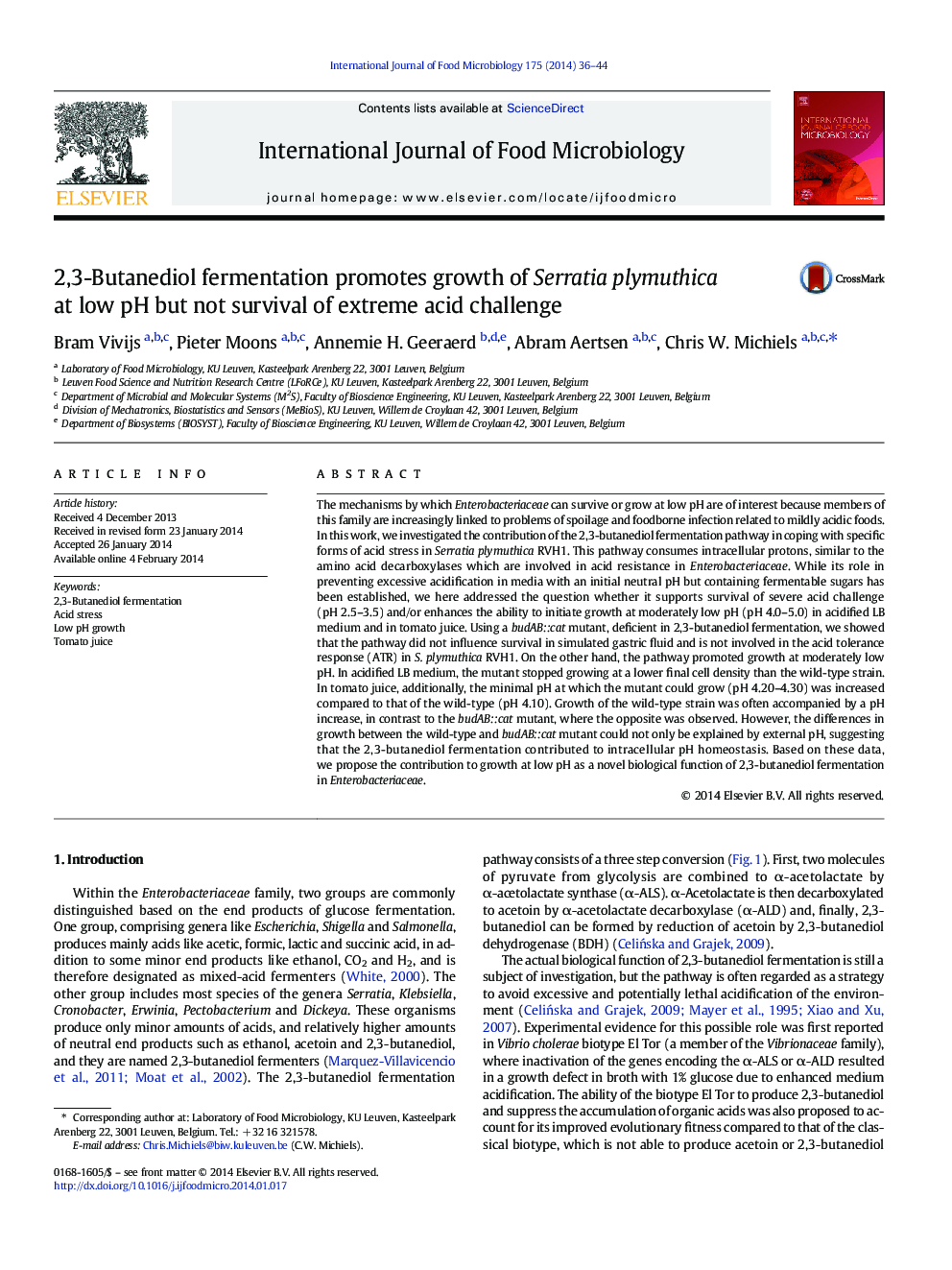| کد مقاله | کد نشریه | سال انتشار | مقاله انگلیسی | نسخه تمام متن |
|---|---|---|---|---|
| 4367025 | 1616607 | 2014 | 9 صفحه PDF | دانلود رایگان |

• 2,3-Butanediol fermentation promotes low pH growth of Serratia plymuthica.
• Low pH growth promotion is demonstrated in laboratory media and in tomato juice.
• 2,3-Butanediol fermentation does not protect S. plymuthica against lethal acid challenge.
• S. plymuthica has an acid tolerance response (ATR).
The mechanisms by which Enterobacteriaceae can survive or grow at low pH are of interest because members of this family are increasingly linked to problems of spoilage and foodborne infection related to mildly acidic foods. In this work, we investigated the contribution of the 2,3-butanediol fermentation pathway in coping with specific forms of acid stress in Serratia plymuthica RVH1. This pathway consumes intracellular protons, similar to the amino acid decarboxylases which are involved in acid resistance in Enterobacteriaceae. While its role in preventing excessive acidification in media with an initial neutral pH but containing fermentable sugars has been established, we here addressed the question whether it supports survival of severe acid challenge (pH 2.5–3.5) and/or enhances the ability to initiate growth at moderately low pH (pH 4.0–5.0) in acidified LB medium and in tomato juice. Using a budAB::cat mutant, deficient in 2,3-butanediol fermentation, we showed that the pathway did not influence survival in simulated gastric fluid and is not involved in the acid tolerance response (ATR) in S. plymuthica RVH1. On the other hand, the pathway promoted growth at moderately low pH. In acidified LB medium, the mutant stopped growing at a lower final cell density than the wild-type strain. In tomato juice, additionally, the minimal pH at which the mutant could grow (pH 4.20–4.30) was increased compared to that of the wild-type (pH 4.10). Growth of the wild-type strain was often accompanied by a pH increase, in contrast to the budAB::cat mutant, where the opposite was observed. However, the differences in growth between the wild-type and budAB::cat mutant could not only be explained by external pH, suggesting that the 2,3-butanediol fermentation contributed to intracellular pH homeostasis. Based on these data, we propose the contribution to growth at low pH as a novel biological function of 2,3-butanediol fermentation in Enterobacteriaceae.
Journal: International Journal of Food Microbiology - Volume 175, 3 April 2014, Pages 36–44